Everyone has a different idea of what it means to grow their business.
Some of us think we need to reach for 6- or 7-figures. Others would prefer a 4-hour work week. And then there are those who would just like to be able to pay the bills and put a little away for retirement. What’s your goal?
Thing is, in order to reach our business goals, we need to figure out a few things:
- How to streamline our operations
- How to deepen our impact without adding to an already-full day
- How to address more than just one of our customers’ needs
Tara Gentile is on a mission to help us with that. And she’s starting the conversation with a new book called, “The Art of Growth” (which I’ve read twice and very much enjoyed).
I spent some time with Tara last week talking about her book, her branding and the thoughts behind her own biz strategies. Below are the highlights; and if you’d like to listen to the entire interview, you can catch it here.
TS: I’ve noticed a real lack of “business experts” who are trying to find new ways of doing things. One of the reasons I was so attracted to your work was the fact that you’ve built your business around the concept of experimentation and study. It’s almost like there’s an academic feel to what you’re doing — kind of a higher intelligence and I wanted to thank you for that.
TG: The academic/intellectual thing is first of all very sincere and authentic to me, but it’s also a conscious branding choice. It’s a choice for me to take where I come from and what I value and turn it up a few notches. Which to me, is one of the secrets of branding. You’ve got to take who you are and expand on it. And yes, there is all of this regurgitation — not just online but offline as well. And I really didn’t want to be part of that. So, that’s where I’m coming from. The funny thing is, my desire was never to be a business strategist. I always wanted to be a professor. I always saw my path in academia. I can still see myself ending up there, but for now, my branding let’s me retain that..
TS: A professor of what?
TG: Religious Studies. I’ve always been interested in why people believe what they believe, what people think and why they do the things they do. My background in religious studies, and even more why I’m interested in Religious Studies is exactly why I’m so good at business. I’m extremely people-driven, customer-driven. Everything I’m interested in business has to do with people. I don’t even know how to talk about business without talking about people. And that’s really the crux of why I do what I do and how I do what I do.
TS: Which is a great segue into my next question: Why did you call this ‘New Economy’ the ‘You Economy’ and not the ‘We Economy?’
TG: Originally, I had talked about this as the You-Centered Economy. If you could imagine concentric circles and think about that as the whole economy. Before 2003, “They” or “Them” would be the center of the economy. They would be the capitalists, industrialists, VCs, the people with the money and the resources were at the center of things. The economy revolved around them. After the advent of blogging and social media and the widespread move toward connective technologies, you had a complete switch. Companies need to now look to individuals as the thing that the economy — the business — revolves around. And if the companies don’t center themselves around the individuals who use their products, they will fail.
My decision was also related to my interest in religious studies. One of the things I studied was Relational Christianity. It has a very long history, and one of my favorite theologians talked about Jesus as a man for others, as a being for others. He talked about turning the center of the church back on the individual and away from the church hierarchy. So if you substitute “church hierarchy” for “capitalists and industrialists” and then substitute the word “customer” for “person of faith,” you start to see that they lay very nicely on top of each other. It really is about the individual — and yes, I very much believe in the power of the connected economy, in the power of the network. We’re all networked capitalists now, in that we’re all using the capital of the network to create businesses that work. But for me, it starts with the individual. With our individual passions, desires and values. With the direction we want to take in life. And then we can sway other people into that. And then just in terms of being clever “you” rhymes with “new” and made a lot of sense, branding wise.
TS: Coming from the whole intellectual branding space that you’re in, I was wondering why you didn’t choose to call your book, “The Art and Science of Growth” or even put more focus on the left-brained part of what you’re doing?
TG: I’ve always bounced back and forth between art and science. I’m very right-brain/left brained integrated. I’m very much attracted to both creative and scientific pursuits, but I tend to explore science more narratively — I’m less likely to be in a laboratory. I’m more interested in understanding the story of why things are the way they are. I want to know how things work. Also, “The Art of Growth” is also very much the big sister to my first book, “The Art of Earning.” That first book was about changing your story about money. About what you’re worth, and what your work is worth. For me, The Art of Growth is also about telling ourselves a different story — about what it means to grow our businesses. So instead of looking at the numbers (the science), it’s about asking, What does growing your business look like for you? And how is it a viable way of showing up in your business day after day? How is it a viable way of playing the executive role (versus the worker bee)? How does your story change when you think of yourself as a visionary and a leader? That’s why it’s an art versus a science. It’s really more about telling your self a different story.
TS: Which is so important because there’s more to growth than bigger, bigger bigger. As you pointed out, it’s just as valid to think about growth as going deeper with what’s already there.
TG: Right, and even if it is about a bigger reach it doesn’t mean you have to take on that traditional picture of growth. I feel like especially in micro entrepreneurship, the topic of growth has been kind of off limits. People talk about wanting to make more money, they talk about wanting to have a bigger list, they talk about wanting less work, but they never associate that with real strategies for getting there. Instead, there’s this idea that if you just work hard enough, it will come. It’s a matter of figuring out how you’re going to grow and then putting the strategies in place to support that.
 TS: It’s funny to me to see that happen, because in the off-line world, I think folks talk about how to scale a lot more.
TS: It’s funny to me to see that happen, because in the off-line world, I think folks talk about how to scale a lot more.
TG: You’re right, there is a difference. When you build a website, you think you’re building a freedom business, but what I’m seeing from my clients and on social media is that people aren’t building freedom-based businesses. They’re not doing the things that will allow them to step away from their businesses. Every strategy they’re using is requiring more and more of their energy. And perhaps with a more analog business you have to think about these things a lot sooner. You know that if you’re opening a brick and mortar shop, you’re going to have to be there at least 12 hours a day. There might be delusions about it before you start it, but there are no delusions once you open the doors. How many web-based business owners are spending 12 hours a day on their websites? Too many of them! We’re paying a lot of lip service to freedom and not a lot of people are experiencing it. And I don’t think it has to be that way.
TS: In your book you talk about the idea of impact to effort ratio. That conversation needs to happen every single day, and I’d encourage you to keep exploring that in your work. The other thing I loved about your book was also that it wasn’t too long. Most business books are 100 pages too many. Yours was long enough, or I should say short enough that I felt like I wanted more.
TG: I used to think that writing a book was a way of putting everything that you know about something into one place. And that’s why you had to wait and wait and wait to write a book. Because you needed to accumulate as much information, ideas and knowledge as possible. What we’re seeing change is not just the way books are marketed, because that’s a big part of it — but the way they’re written and consumed. Now, books are an opening volley for deeper conversations that will last a very long time. For instance, people still ask me to talk about The Art of Earning. That’s still the thing I get asked to speak at conferences about. And I’m happy to have that conversation over and over and over again. When I go back and look at that book, I think there’s so much I didn’t put in. There’s so many more places this conversation has gone since then. And there’s more detail and nuance I could put in that book now. So when I rewrite the book, it will be the second volley. I was very conscious of that intention when I wrote the Art of Growth. It wasn’t meant to be a comprehensive look at this philosophy, but rather an opening volley for a deeper conversation. It’s a conversation starter. For me, the joy and the sparkle is all in what grows from that original foundation.
TS: Good, then what questions or feedback would you like to have from your readers?
TG: How are people trying to achieve an increase in their EtI (effort to impact ratio)? How are people putting together products, programs and marketing ideas that allow them to leverage their strengths? What personal strengths do they have that they’re having a hard time using in their business? What is it they’re good at that isn’t translating so well to business, right now?
TS: Your idea of the Most Valued Customer profile was great because it went beyond, “what’s their biggest problem right now?” You help us see that our clients are really going to have a lifetime of needs. That their biggest problem right now won’t be the thing they’re focusing on down the road. Their needs evolve. But I’m concerned that folks will get overwhelmed with the idea of trying to address marketing or content for all sorts of different problems. How do you address that challenge with your clients?
TG: You may have an amazing set of skills, but if you don’t know how they’re going to apply to someone’s needs or desires, you need to go back to the drawing board. Everyone starts with a problem that they can address. I’m not suggesting that you don’t start with just one problem, need or desire. But I think the default then turns into how can I find as many different people with this one singular problem? That gets exhausting because you’re only doing one thing, or only answering one question. You may have several products or services that fill the same need, but you’ve still only addressed one point on the timeline. Instead, think of that as just one point on the timeline of your most valued customer. My definition of your MVC is someone who will get the most value from your business and give the most value to your business. In other words, they’re someone who’s going to get their questions answered and needs filled, but at the same time they’ll tell the most people about you and spend the most money with you. If we look at that first problem you’re addressing as just one point on that MVC’s timeline, then we can go back in time in their lives and experiences and we can go forward. You go back as far as it takes to get to the point where people are ready to enter your market. It’s a point of readiness. It’s an experience, it’s a question, it’s a frustration or discovery that allows that person to go looking for the value that you’re creating. You can create a product or a blog post or an experience that addresses that point of readiness. On the opposite end of the timeline is the vision that you’re holding for your customer. This is the pie-in-the-sky dream that you have for them. If you’re a relationships coach, then you see them with the most beautiful and healthy relationships. If you sell art, then you see them with all the art they could ever want. What’s important is that as our businesses grow, and as we’re developing new products and services, we make sure that one experience evolves into another into another. Their next step is a good problem for you both to have. And so on, until you reach that ultimate vision. All businesses have the capacity to create these long term relationships. Make your customers happier and happier and happier. It’s a lot easier to do business that way than it is to have to keep going out and finding new clients just for one point in time.
TS: It is. And I would say that my business definitely operates from that perspective, but my clients usually come to me because they’re having challenges putting together their marketing messages. I have them focus on just one message — one problem or desire — first. I think if they tried to address the whole timeline at once, they’d have a nervous breakdown.
TG: …which is why this is a strategy for growth and not for jumping off. The starting point always has to be given a lot of energy and care. But, I’m a big picture kind of person. I want to see how something is going to evolve over time.
TS: And the “critical selling” is where that evolution happens, right?
TG: It’s the thing I love. So many people spend so much time and energy trying to make something perfect the first time through — specifically products. Everyone wants to have a Maria Forleo B-School, but it didn’t start off looking like what it looks like now. She didn’t start off looking like she looks now. Same thing for me, same thing for you. You don’t have to sell something 100% completely done and polished. In fact, if you are, I think you’re losing. Because a product is something that’s best when it’s co-created with the customers. Products need to be a lot more like services. Services are always co-created because there’s always a back-and-forth conversation between the client and the service provider. Look at the iPhone. Could Steve Jobs have envisioned the iPhone 5 years ago? Probably, yes. But they didn’t start there. They chose to leave certain features off for the first iteration. And so that’s really what critical selling is all about. Creative selling is about coming up with the idea. Critical selling is taking the idea and working it through with your clients so that you develop something even better than you could have imagined on your own. It means starting with a book like “The Art of Growth.” Could I have added another 30,000 words? Sure! The day I hit publish, I had another 30,000 words. But I’m okay with that, because the next thing that happens may be version 2.0 (with 50,000 words). Or it could be a program, or a retreat. I see each of those things being part of the critical selling process. They turn into families of products, for me. I’m making money with the ideas as I’m allowing them to grow, as I’m learning the new questions. Critical selling has allowed me to stack up my income streams so that I can make more money while I learn and at the same time my customers receive immense impact. Plus, they have a say in the development of the thing. It is about empowering your consumer and at the same time making more money over time. I don’t think most people would argue with that thesis.
TS: I hope you’ll use that as your jumping off point when we have you on Prosperity’s Kitchen for our Product Development session.
TG: I will!
The book is available on Amazon, or on Tara’s website in a Mulitmedia package (includes printable PDF, EPUB format suitable for iBooks, Kindle, or Nook, and an audiobook version). If you’re not ready for the book, she’s got a free e-guide called “5 Ways to up your Impact and Lighten Your Load.” It’s available when you subscribe to her newsletter.
I’ll be giving away three Kindle versions of Tara’s book (you don’t need the Kindle device to read a Kindle book) on Jan 28th (which also happens to be my son’s birthday). Winners will be selected at random from the comments below. If you’d like to have a chance at winning, you’ll need to leave a question or comment for Tara or myself no later than midnight, Jan. 27th. You can either: 1) tell us your vision for growing your business and how you plan to get there; or 2) Ask anything related to Tara’s book, the topic of growing your business or any of the finer points we discussed in this interview.
Ready? Go!

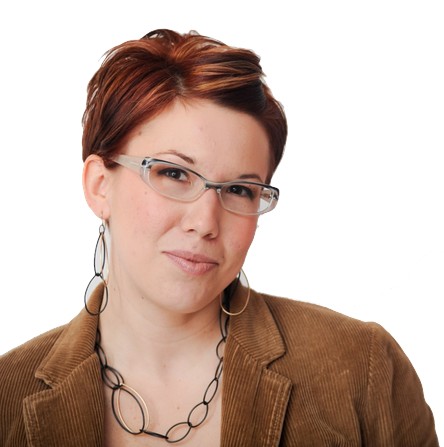
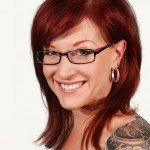
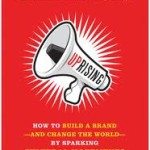

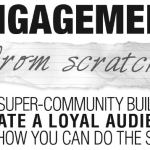
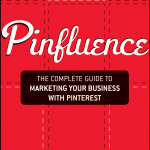




Rather than wait to win the book, I just went ahead and bought it! Then I devoured the information quickly. Now I’m letting it simmer. I love the idea of thinking about your Most Valuable Customer in the future. I’m figuring out how I can be a catalyst for change now and in the future. This is a very informative interview. Thanks, Tea and Tara!
My first goal is to go back and see what ‘need’ my products are filling, or what problem they are solving. Some of them are obvious (to me), but this sounds like an incredible ‘back-to-the-basics’ kind of brainstorming and getting-serious moment fro which I could benefit. I have 10000 ideas in my head, and I have to start somewhere.
Thank you for this marvelous interview! I printed it and shared it with several friends of mine.I like to think the shift to a “consumer-centered” economy was out of a desire to feel affirmed. How refreshing to have a company openly show gratitude that you supported their product. I like it, so I practice it. On another note, I can totally relate to the “right/left brained” approach of art woven with science. I teach science. I am wired that way, but I too, think that defining a “growing business” is more than the sum on the balance sheet. It is about the growth of an idea, an individual, and to that- a movement.
I’ve loved books like “Jesus, CEO” and “The Man Nobody Knows” as great examples of how Jesus’ work tranlsates to the business world. When we come form a place of service, it becomes infinitely easier to attract the right people, as well as test our theories around what will work and what doesn’t. My plan for growth this year is to record 300 songs (I’m about 15 into it at the moment), and source a business manager for my coaching practice. At some point, there comes a time to leverage and focus. Leverage time and resources so you can focus on what is most profitable. And my definition of “profitable” means a return on the time, energy, attention, and money you’ve invested into something. Looking forward to reading the book!
Whoot! I adore Tara. She’s got such a broad, intelligent approach to this whole biz thing. So inspiring – and I’ve been inspired to put some serious thought towards my own business. My plan this year is to reduce website setup work to 20% of my total, and increase my consulting and social media content work to 80% combined, which is a direct reversal from last year’s numbers. So excited to make this happen!
Tara, I find your connection to religion studies and your business fascinating. I was your standard corporate manager, working hard at my job, but enjoying it less and less. I’m still not sure how connected it was to my decision, but it was after I’d begun exploring eastern religions, the history, the belief systems, etc. that I decided to start my own business. I’m still a long way from my goals, but most days I think that I am on the right path.I know that most of the projects I have taken on have really helped my clients, even though the ones I loved most made me little money. With a hefty mortgage and a son in college, I really need to balance helping others (usually 1-2 person companies who often can’t afford very much) with clients (larger businesses) who can afford my preferred rates, but whose projects are never “heart-based.” Do you have any advice on how to balance that effort in the “You Economy,” and is that a challenge you face?
Wow, this is such a thorough interview that it’s hard to come up with a question that hasn’t already been answered! I really do love the concept of MVC and I can see that I have a few of those.And I definitely need to increase my own EtI ratio because I spend too much time solving people’s little problems. How do you avoid answering those questions you get via email that you know the answer to? And if you answer that person’s question, will they become a MVC in future, or are they just grabbing everything they can? I struggle with that! But I often turn those questions into blog post or YouTube ideas. So I guess my question is, how do you let go of things? Especially things that might not have the greatest EtI, but are fun to do?